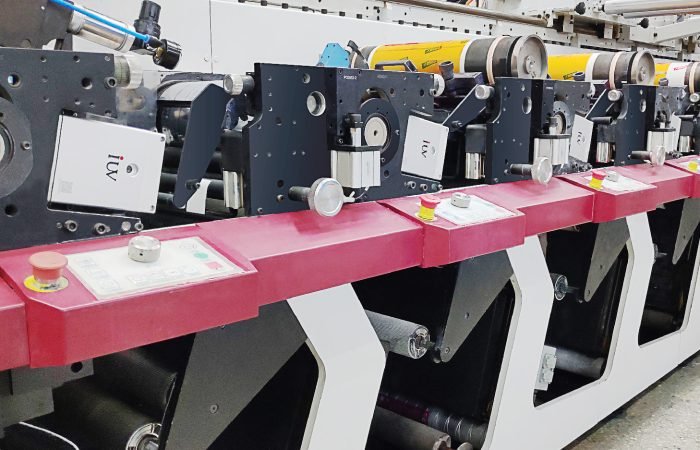In the fast-paced world of printing, UV curing flexography has emerged as a game-changer for handling delicate materials. Unlike traditional methods that rely on heat-intensive drying, this technology uses targeted ultraviolet light to instantly cure inks and coatings. The magic happens through photoinitiators in the formulation that activate under specific wavelengths, creating durable prints without warping heat-sensitive films or distorting stretchable substrates.
Label converters particularly benefit from this approach when working with thin polyester films or pressure-sensitive materials prone to shrinking. Narrow web presses equipped with LED-UV systems achieve crisp registration on flexible packaging materials that would normally curl under conventional drying tunnels. For thermal transfer labels and tamper-evident seals, the cold cure process maintains adhesive integrity while delivering abrasion-resistant surfaces.
Flexo’s advantage over offset printing becomes apparent in substrate versatility. Where lithography struggles with non-porous stocks, UV flexo inks adhere perfectly to synthetic papers, metallic foils, and textured surfaces. The instant curing eliminates ink absorption wait times, allowing immediate finishing operations like die-cutting or lamination. Printers handling shrink sleeves appreciate how UV-cured inks maintain elasticity during container application and heat-shrinking processes.
LED-UV technology takes this further by eliminating mercury-vapor lamps. These solid-state units consume 70% less energy while providing consistent output across 20,000 operating hours. The directional nature of LED arrays allows precise curing control – crucial for thick white underbases in opaque labeling or gradient effects on premium wine capsules. Operators can fine-tune wavelengths between 365-405nm to optimize curing for different ink chemistries without overheating sensitive materials.
Environmental factors play a significant role in adoption. UV flexo eliminates solvent emissions entirely, meeting stringent VOC regulations for food-contact packaging. Water-based alternatives can’t match the rub resistance and color density achieved through UV curing, especially on non-absorbent stocks. Print shops report 40-60% reduction in waste compared to conventional flexo, as instant curing prevents ink skinning and allows faster job turnover.
Substrate innovation drives new applications. Printed electronics on PET films require curing at under 40°C to preserve conductive layers – a temperature threshold easily maintained with modern LED systems. Medical packaging converters utilize UV’s sterile curing process for blister packs and IV bag labels. Even heat-sensitive retroreflective materials for safety signage now withstand high-speed flexo printing through tailored UV formulations.
Press configurations continue evolving to leverage these benefits. Central impression flexo presses with integrated UV curing stations handle unsupported films down to 12 microns. Hybrid machines combining flexo stations with digital inkjet units use UV curing to lock each layer before applying the next. This proves invaluable for variable data printing on security labels where ink adhesion between technologies often causes complications.
Ink chemistry remains crucial to the equation. Formulators balance pigment loading with photoinitiator concentrations to achieve cure-through on dark substrates while maintaining flexibility. New oligomer blends enable UV-cured inks to withstand -40°C freezer storage or repeated sterilization cycles without cracking. The latest low-migration UV inks meet Swiss Ordinance and Nestlé standards for direct food contact, expanding into flexible packaging markets previously dominated by gravure.
Operational considerations include proper surface pretreatment for challenging substrates. Corona treatment systems integrated with UV flexo presses ensure dyne levels above 38 mN/m on polyolefin films. Static control devices prevent dust attraction during curing – critical for clear-on-clear labels where even micron-sized particles create visible defects. Press speeds now reach 300 meters/minute for simple label designs, with inline inspection systems verifying cure completeness through fluorescence detection.
The shift toward sustainable packaging amplifies UV flexo’s relevance. Recyclable mono-material structures using PP or PE films require printing methods that don’t compromise recyclability. UV-cured water-based inks are being developed to combine ecological benefits with the performance of traditional UV systems. Meanwhile, energy-curable flexo inks help brands meet Cradle-to-Cradle certification requirements for technical nutrients.
As substrate diversity grows across industries, UV curing flexography positions itself as the adaptive printing solution. From temperature-sensitive RFID antennas to foldable OLED display components, the technology’s ability to marry precision with material gentleness continues unlocking new applications. Print providers investing in UV flexo capabilities find themselves equipped to handle both current market demands and emerging substrate challenges.












